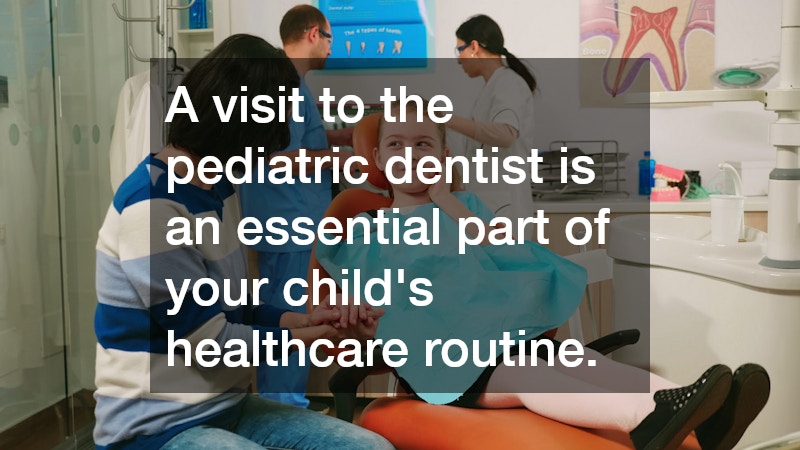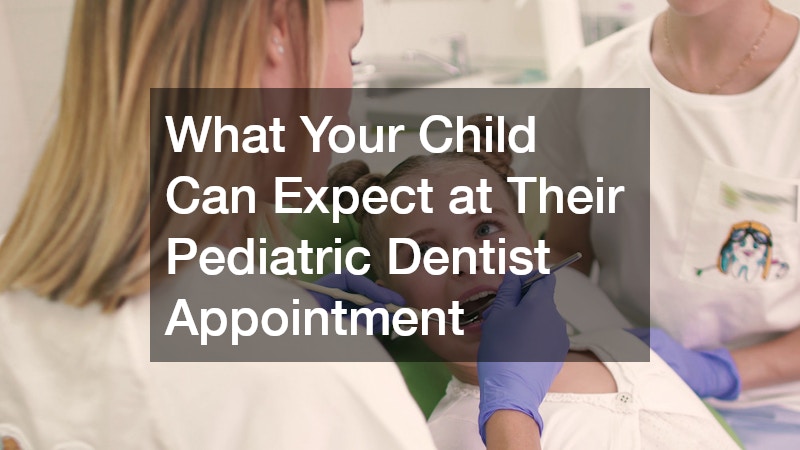
What Your Child Can Expect at Their Pediatric Dentist Appointment
A visit to the pediatric dentist is an essential part of your child’s healthcare routine. These appointments play a crucial role in maintaining their oral health and catching any early signs of dental issues. Understanding what to expect can make the experience smoother for both parents and children and highlights the importance of regular dental check-ups.
Regular dental visits help prevent cavities and promote good oral hygiene habits from a young age. Establishing a positive relationship with the dentist can lead to better dental health as your child grows. The first visit can set the tone for future appointments, making it crucial to start on the right foot.
This article provides a detailed look into the process, so parents know exactly what will happen during the appointment. From the initial consultation to specific dental procedures, the insights offered here aim to reassure and prepare both parents and children. By understanding these aspects, parents can help their children navigate their dental journey with confidence.
What Happens During the First Visit?
Initial Consultation and Exam
The initial consultation is a time for the dentist to communicate with both parents and children. Questions about your child’s dental history and habits help paint a picture of their current oral health. This information is vital as it guides the dentist in determining the best course of preventative care.
During this exam, the dentist examines the child’s teeth, gums, and mouth. They look for signs of decay or any developmental issues. Experienced pediatric dentists know how to engage children and explain what they are doing, easing any anxiety the child might feel.
Parents should use this time as an opportunity to ask questions and express any concerns. Open communication ensures everyone is on the same page regarding the child’s dental health. The consultative approach ensures that both parents and children feel heard and supported.
Understanding the Equipment
Dental equipment can often be intimidating for children, but understanding its purpose can reduce anxiety. Pediatric dentists typically introduce the tools as friendly, explaining their uses in simple terms. This encourages curiosity rather than fear during dental visits.
Tools like the dental mirror, pick, and polisher are common but serve specific functions. By allowing the child to see and touch harmless tools, they gain a sense of familiarity. It demystifies the process and builds trust between the child and the dentist.
Parents should encourage their children to voice any questions they have about the equipment. Understanding how each tool helps keep their teeth healthy can empower kids during their appointments. Ultimately, this knowledge allows for a more interactive and engaging experience for young patients.
Building Comfort and Trust
Comfort and trust are critical to a successful pediatric dental appointment. Dentists often employ soothing techniques to put young patients at ease. These may include speaking in a soft voice, having a welcoming office decor, and offering praise and encouragement.
Some practices provide distractions, such as cartoons or music, to keep children engaged and calm. Dentists also use a tell-show-do approach, explaining procedures in kid-friendly language before demonstrating on a model or finger. This method not only educates but also reassures children about what to expect.
Building a rapport with the dentist encourages children to look forward to their visits. Over time, repeated positive experiences reduce fear and apprehension. This foundation of trust is invaluable for ensuring compliance and regular attendance at future appointments.
How Can Parents Prepare Their Child?
Discussing the Appointment
Parents play a crucial role in preparing their child for a dental visit. Talking openly about the upcoming appointment can alleviate much of the anxiety a child might feel. It is beneficial to anticipate their questions and approach the conversation with honesty.
Explaining procedures using simple language helps demystify the experience. Comparisons to familiar scenarios, like visiting a doctor or hairdresser, can provide useful context. Encourage your child to express their feelings, validating any worries or fears they may have.
Practicing calmness and enthusiasm about the visit sets a positive tone. Parents should avoid sharing their own negative experiences or using the dentist as a threat for unhealthy habits. A positive narrative can turn a child’s curiosity into excitement rather than apprehension.
Packing for the Visit
Preparing a small bag for the dental visit can provide comfort for the child. Items like a favorite toy, book, or blanket can be comforting and reassuring. These familiar objects can serve as distractions or as a source of security in the waiting room.
Snacks or a drink can also be helpful, keeping your child satisfied and hydrated. However, it’s important to remember not to feed them right before the appointment to ensure clean teeth for the examination. Simple activities or games on a tablet can also help pass the time and distract from nerves.
Encouraging older kids to bring a journal or drawing pad can also be a creative outlet. By packing these items, you help create a predictable and comforting routine for the child. This approach can make a significant difference in minimizing anxiety and enhancing the experience.
Role-Playing at Home
Engaging in role-playing games at home can demystify dental appointments. Parents and children can take turns acting as the dentist, using safe household items to mimic tools and procedures. This activity frames the visit as a fun experience, rather than something to dread.
Role-playing can include actions like counting teeth, brushing, or using a flashlight to examine the mouth. Children can learn about what happens during a visit, building familiarity and reducing uncertainty. This understanding is key to building confidence ahead of the appointment.
Parents should use positive language throughout the game to reinforce encouraging ideas about dental care. Emphasizing the importance of clean and healthy teeth helps children internalize good practices. Making the exercise playful and interactive turns anticipation into excitement for the real appointment.
What Procedures Are Typically Performed?
Teeth Cleaning and Polishing
One of the main procedures during a dental appointment is teeth cleaning and polishing. This process involves removing plaque and tartar from the teeth, which are common culprits of cavities and gum disease. Dental hygienists use special tools to thoroughly clean each tooth’s surface and between them.
Following the cleaning, a polisher is used with a flavored toothpaste to give teeth a smooth finish. This polishing helps remove surface stains, leaving the teeth shiny and clean. It’s important because it reinforces the idea that dental visits contribute to a beautiful smile, motivating children to maintain good oral hygiene.
During this process, the dental team will also demonstrate the correct brushing and flossing techniques. This instruction is crucial for kids to learn how to care for their teeth effectively at home. By including children in their dental care, dentists empower them to take control of their oral health.
X-Rays and Their Purpose
X-rays are an essential diagnostic tool in pediatric dentistry, even at a young age. They provide a clear picture of a child’s oral development, underlying structures, and potential issues. Understanding their purpose can alleviate concerns about exposure to X-rays.
The process is safe and quick, using minimal radiation and ensuring the child wears protective gear. X-rays reveal what cannot be seen during a routine exam, such as hidden cavities or alignment issues. This early detection can lead to swift interventions and better outcomes in dental treatment.
The frequency of X-rays may vary, guided by the child’s age, dental development, and risk factors. The dentist will explain the necessity and benefits of X-rays, ensuring parents and children are comfortable with the procedure. Understanding their importance can foster cooperation and a sense of partnership in care.
Cavity Checks and Fillings
Checking for cavities is a fundamental part of any dental appointment for children. Decay can occur rapidly in young teeth, so early detection is key to preventing further damage. In cases where cavities are found, a filling may be necessary to restore the tooth’s function.
The filling process involves numbing the area around the affected tooth before removing the decay. The dentist then fills the cavity with a safe and durable material, usually composite resin. This stops the progression of decay and strengthens the tooth structure.
Educating children on the importance of cavity prevention is part of the visit. The dentist will emphasize good brushing habits, regular flossing, and a balanced diet to reduce the risk of future cavities. This comprehensive approach ensures children understand the role they play in maintaining their dental health.
Conclusion
Regular pediatric dental appointments are a cornerstone of good oral health care. By preparing for these visits and understanding the processes involved, parents and children can ensure each visit is a positive experience. Building a trusting relationship with your dentist is vital for sustaining long-term oral health.
These appointments provide not only immediate care but also set the stage for wholesome dental habits in the future. Fostering a positive attitude towards dental care encourages children to prioritize their oral health as they grow. It’s a partnership between dentists, parents, and children that lays the foundation for a lifetime of healthy smiles.
We hope this article has shed light on what to expect and how best to prepare for pediatric dental visits. Armed with knowledge and encouragement, you can support your child through their dental journey. In doing so, you’ll instill in them the importance of regular check-ups and a commitment to maintaining their oral well-being throughout their lives.



